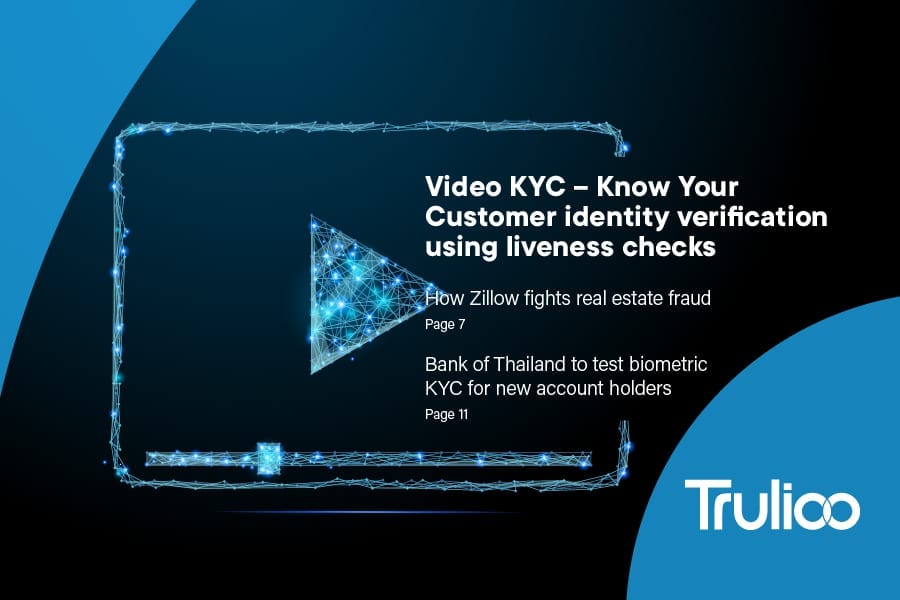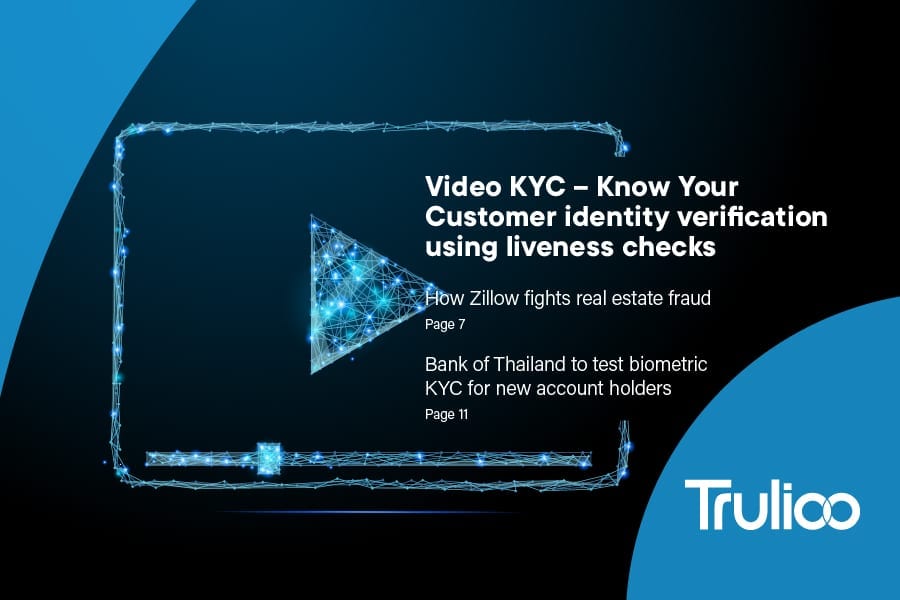
There has been a lot of discussion in identity circles about ID document verification, using actual identity documents to remotely verify a person. Ascertaining if someone is in possession of an identity document and verifying that document is authentic and hasn’t been forged or altered in any way is a powerful way to reduce the risk of fraud.
However, what if a fraudster gets hold of someone else’s ID document? How can an organization better ensure that the person who has the ID is the legitimate owner of that ID?
Video KYC
Enter video KYC, which a PYMNTS AML/KYC Tracker Deep Dive describes as a technique “through which customer-provided videos of themselves are compared against the images on their ID documents.” The Deep Dive notes that it’s a lot harder to falsify moving images as compared to still images, such as selfies. Add in a liveness factor, ensuring that the video hasn’t been prerecorded by requesting a certain word or action be displayed on the video, and the risk of falsification drops even lower.
Of course, just requesting a live video is one thing; the ability to access and verify it as real is another. One aspect of digital identity verification that provides tremendous value to organizations is the ability to automate and scale the verification process. If video KYC in the end requires a manual check by a person, does it really add a lot of value? Perhaps the technology will one day allow for complete automation of the process, but as of now a person is required to run a full and proper check.
Other technical considerations also come into play such as available signal bandwidth, lighting and other factors to take and submit a proper live video. On the verification side, it’s necessary to have properly trained experts available, and as the ingenuity and tools of fraudsters increases, these experts will have to become ever more discerning.
As with other identity verification techniques, there are use cases that do make sense. Especially, if the account is of significant value and in-person verification is not possible, combining the extra step of video KYC with identity data and ID documents provides an additional layer of fraud protection.
Real estate money laundering
The November PYMNTS AML/KYC Tracker also examines real estate fraud and how real estate platform Zillow is balancing tight AML and KYC security with easy onboarding. The real estate industry is notorious for money laundering, as it regularly deals with large transaction amounts. One estimate suggests that $1.6 trillion is laundered through real estate each year.
Zillow Director of Product Development Justin Farris states that the company must be “attuned to the suspicious indicators in each transaction, on a very transaction-specific manner, in order to help the government uncover the larger conspiracy.” However, he also knows that they can’t unnecessarily burden legitimate customers by making them go through onerous processes:
“We believe in only asking users to disclose key information when it’s necessary. To browse, most users just need an email and password along with a few key shopping details. … As a customer gets more serious, they will be asked to disclose more information and, toward the end of the process — [whether the user is] buying, selling or both — [the] user is connected with a real estate agent or a Zillow Group employee.”
Trulioo COO Zac Cohen also weighs in on real estate money laundering: “to mitigate risk and compliance fines, many of which are never made public, real estate companies transacting both types of deals must take AML into their own hands. They should seek out technologies developed specifically for AML compliance, [Ultimate Beneficial Owner] identification and watchlist screening and integrate them into their transaction processes for sellers and buyers.”
The AML/KYC Tracker also covers KYC requirements for online gambling companies and certain securities market participants, biometric KYC, KYC for African and Asian banks, UK crypto rules and many other KYC news items updates and quick facts.

Download the AML/KYC Tracker
Solutions
Regulatory Compliance
Optimize Identity Verification for Regulatory Compliance
Featured Blog Posts
Individual Verification (KYC)
KYC: 3 Steps to Achieving Know Your Customer ComplianceBusiness Verification (KYB)
Enhanced Due Diligence Procedures for High-Risk CustomersIdentity Verification
Proof of Address — Quickly and Accurately Verify AddressesIndividual Verification (KYC)
Top 10 Questions About Beneficial Ownership for AML/KYC ComplianceBusiness Verification (KYB)
How to Verify Legitimate Businesses and MerchantsIndividual Verification (KYC)
Customer Due Diligence Checklist — Five Steps to Improve Your CDD



